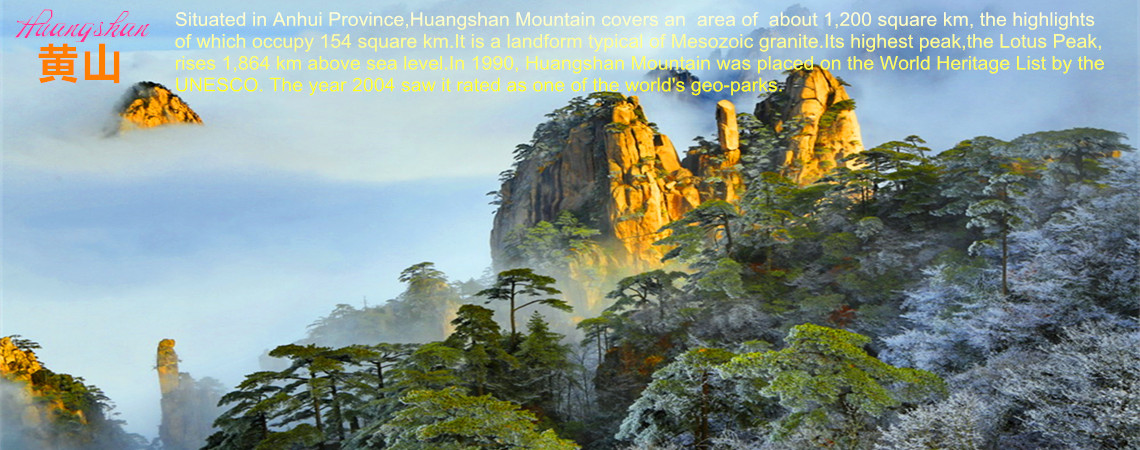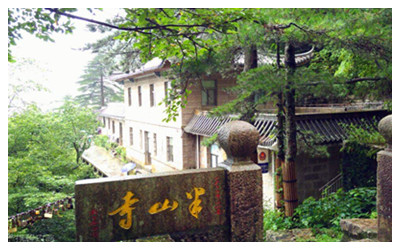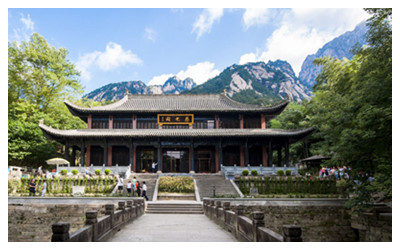Skype: neodalle-travel
Tel: +86 135 7447 2266
E-mail: sales@zhangjiajieholiday.com

 Survey says the religious were the first to become attached to Mt. Huangshan. Taoist activities in the mountain were recorded in the old Taoist books of the Tang Dynasty. Based on the legend, the ancient Chinese Emperor Xuanyuan had been here to make elixir with Rong Chengzi and Fu Qiu. After attaining perfection in Taoism, he ascended to Heaven. The devout Taoist Emperor of the Tang Dynasty Li Longji had a profound belief in it and thus decreed on June 17 of the sixth year of the Tianbao period ( 947 AD.) that the mountain be renamed Mt. Huangshan which was named Mt. Yishan in the Qing Dynasty. Names of its several peaks are related with the legend and Taoism.
Survey says the religious were the first to become attached to Mt. Huangshan. Taoist activities in the mountain were recorded in the old Taoist books of the Tang Dynasty. Based on the legend, the ancient Chinese Emperor Xuanyuan had been here to make elixir with Rong Chengzi and Fu Qiu. After attaining perfection in Taoism, he ascended to Heaven. The devout Taoist Emperor of the Tang Dynasty Li Longji had a profound belief in it and thus decreed on June 17 of the sixth year of the Tianbao period ( 947 AD.) that the mountain be renamed Mt. Huangshan which was named Mt. Yishan in the Qing Dynasty. Names of its several peaks are related with the legend and Taoism.
Buddhism was introduced into Mt. Huangshan about the Yuanja period of the Southern Dynasty ( 424 ~ 453 AD.). Through the ages, nearly a hundred temples were orderly established in most beautiful sites here. Among them more than ten were granted or inscribed by emperors. Taking the advantage of topographical features, all the temples with the clustering peaks and verdant pine trees surrounding them complement to each other. The Xiangfu Temple, the Verdant Temple, the Benevolent-LIght Temple and the Alms-Bowl-Throwing Meditation Temple are the Four Jungles of Mt. Huangshan.
 The Benevolent-Light
The Benevolent-Light
Temple
The Benevolent-Light Temple, also known as Ciguang Temple, was erected in the Wanli Period of the Ming Dynasty in accordance with an imperial order. It possesses a three-gradation yard, two brilliant buildings for the collection of sutra and an inscription board granted by the Qing Emperor Kangxi. The board reads " Fairy Capital of Yellow Sea ". Set up by Monk Bao Xilei from ancient India in 882 AD ( the second year of the Tang Dynasty's Zhonghe Period ) was the Verdant Temple which was partly in the style of ancient civilian housing of Southern Anhui. In 947, the fifth year of the Southern Tang Dynasty's Baoda Period, an inscription board granted by the Emperor then began to be suspended in it. Built by the Taoist Zhang Yifu in 1253~1258 ( Song Dynasty ) was the Pine-Valley Nunnery, which was altered as a Buddhist temple in the Ming Dynasty's Xuande Period ( 1426~1453 ), and it still remains in the style of the Taoist temple of the Song Dynasty. In the past, temples here varied greatly in size and scale. And many of the Buddhists in the mountain were good at posey and painting. Among the famous were Daoyun ( Tang Dynasty ), Haineng, Hongzhi, Yinke, Yuanzhe, Wangyin ( Ming Dynasty ), Dajun, Dahan, Pian, Jianjiang and Xuezhuang ( Qing Dynasty ),all leaving behind enduring master-works of literature and art.
 Ask Questions ?
Ask Questions ?